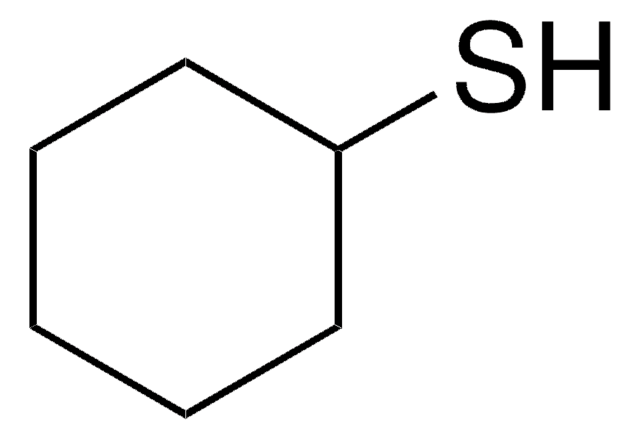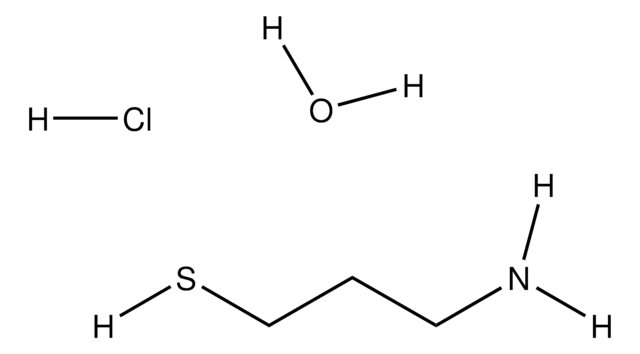C68601
3-Chloro-1-propanethiol
98%
Synonym(s):
γ-Chloropropyl mercaptan, 3-Chloropropan-1-thiol, 3-Chloropropanethiol, 3-Chloropropyl mercaptan
About This Item
Recommended Products
assay
98%
form
liquid
refractive index
n20/D 1.4921 (lit.)
bp
145.5 °C (lit.)
density
1.136 g/mL at 25 °C (lit.)
SMILES string
SCCCCl
InChI
1S/C3H7ClS/c4-2-1-3-5/h5H,1-3H2
InChI key
TZCFWOHAWRIQGF-UHFFFAOYSA-N
Looking for similar products? Visit Product Comparison Guide
General description
Application
- Solution-Phase Hybrid Passivation: 3-Chloro-1-propanethiolis used in the passivation of quantum dots to enhance the performance of infrared-band gap quantum dot solar cells, suggesting significant improvements in efficiency and stability (Mahajan et al., 2020).
signalword
Warning
hcodes
Hazard Classifications
Eye Irrit. 2 - Flam. Liq. 3 - Skin Irrit. 2 - STOT SE 3
target_organs
Respiratory system
Storage Class
3 - Flammable liquids
wgk_germany
WGK 3
flash_point_f
109.4 °F - closed cup
flash_point_c
43 °C - closed cup
ppe
Eyeshields, Faceshields, Gloves, type ABEK (EN14387) respirator filter
Choose from one of the most recent versions:
Already Own This Product?
Find documentation for the products that you have recently purchased in the Document Library.
Customers Also Viewed
Our team of scientists has experience in all areas of research including Life Science, Material Science, Chemical Synthesis, Chromatography, Analytical and many others.
Contact Technical Service













